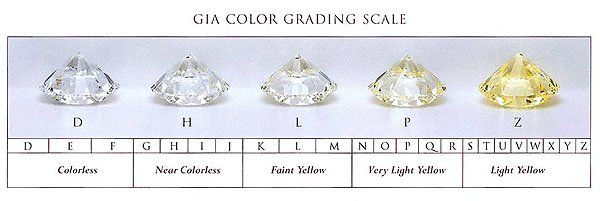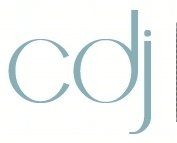
The 4 C's of a Diamond
The cut of a diamond, its proportions and symmetry
are of extraordinary importance as they have a strong influence on the
brilliance, liveliness, or sparkle of a stone. This is the one factor
most directly influenced by man as the other three are dictated by
Nature. The polisher`s skill is also important for shaping the stone.
The most popular diamond shape is the round brilliant-cut. Other shapes
such as the emerald-cut, oval, pear, heart, princess-cut, and marquise,
are referred to as "fancy cut". The cut and proportion of a stone in the
diamond trade is also known as its "make" and overall quality can be
described as very good, good, medium, or poor "make".
The width and depth have the greatest effect on how light travels within the diamond.
The diagram below depicts the attributes of a diamond. |

Color is the second most important characteristic of a gemstone and
it is one of the key factors to be considered when determining the value of a
diamond. The ideal color is the total absence of all body color (colorless)
except in fancy colors of yellow, pink, blue, green, champagne, black, and the
very rare red, where an intensive hue is an asset. A very precise scale of
color grading is in general use today in the diamond trade as defined by the
GIA (Gemological Institute of America). The grades are distinguished by letters
of the alphabet, beginning with the best color which is D.
Recommendation:
As a rule of thumb, when you are purchasing a
diamond for an engagement ring the lowest you would ever want to go on
Color is I. If you are looking at a diamond in a setting that has a
grade of an I and it looks really yellow then it is possible that the
diamond was bought as a K or L color and sent out to be certified in the
setting.

The clarity of a gemstone is assessed by examination of imperfections, inclusions (internal objects) and blemishes (external marks) under magnification of 10X(X=power). Almost all diamonds contain minute traces of non-crystallized carbon or small non-diamond crystals. A flaw in a gemstone is Nature’s fingerprint making every diamond unique. Most flaws are not visible to the naked eye and require magnification to be apparent. However, the fewer there are, the rarer the gemstone will be. This diagram shows what inclusions look like under 10X Magnification.
Recommendation: When purchasing a diamond, the lowest in the diamond clarity should be an SI2, which is normally eye clean.
.

The carat is the unit of weight, not size. One carat weighs 200 milligrams or 1/3 of a gram and is divided into 100 points, so that a diamond of 50 points is described as a half carat or 0.50 carats. Carat-Weight is the most obvious factor in determining the value of a diamond, but it is important to bear in mind that two stones of equal size can have very different values depending on their quality. In addition, the cost per carat will rise when the size of a diamond increases(Ex. There would be about a $1,000 dollar savings in a diamond weighing 0.92ct and another weighing 1.01ct with all the other 3 C’s being equal, even though they look the same size).
Recommendation: Before choosing the size of the diamond you want for your significant other:
1. Show this chart to her and ask to decide what size fits best...
2. Once you both come to a consensus on what size diamond, then schedule an appointment and we will work together to find that perfect diamond.

